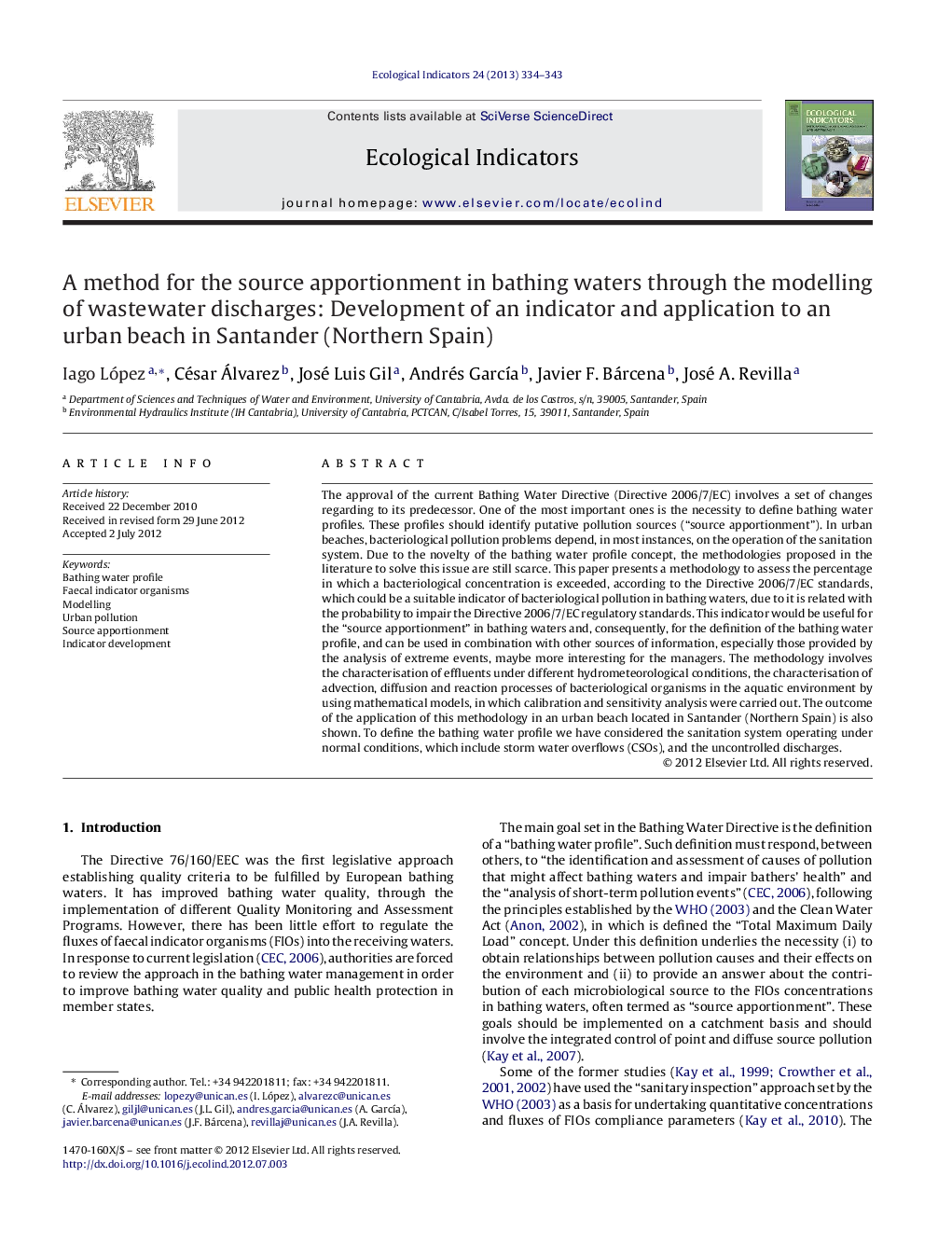| Article ID | Journal | Published Year | Pages | File Type |
|---|---|---|---|---|
| 4373653 | Ecological Indicators | 2013 | 10 Pages |
The approval of the current Bathing Water Directive (Directive 2006/7/EC) involves a set of changes regarding to its predecessor. One of the most important ones is the necessity to define bathing water profiles. These profiles should identify putative pollution sources (“source apportionment”). In urban beaches, bacteriological pollution problems depend, in most instances, on the operation of the sanitation system. Due to the novelty of the bathing water profile concept, the methodologies proposed in the literature to solve this issue are still scarce. This paper presents a methodology to assess the percentage in which a bacteriological concentration is exceeded, according to the Directive 2006/7/EC standards, which could be a suitable indicator of bacteriological pollution in bathing waters, due to it is related with the probability to impair the Directive 2006/7/EC regulatory standards. This indicator would be useful for the “source apportionment” in bathing waters and, consequently, for the definition of the bathing water profile, and can be used in combination with other sources of information, especially those provided by the analysis of extreme events, maybe more interesting for the managers. The methodology involves the characterisation of effluents under different hydrometeorological conditions, the characterisation of advection, diffusion and reaction processes of bacteriological organisms in the aquatic environment by using mathematical models, in which calibration and sensitivity analysis were carried out. The outcome of the application of this methodology in an urban beach located in Santander (Northern Spain) is also shown. To define the bathing water profile we have considered the sanitation system operating under normal conditions, which include storm water overflows (CSOs), and the uncontrolled discharges.
